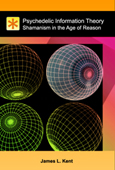
References
EEG coherence in post-LSD visual hallucinations
Abraham HD, Duffy FH; Psychiatry Res. 2001 Oct 1;107(3):151-63.
LSD use in certain individuals may result in chronic visual hallucinations, a DSM-IV syndrome known as hallucinogen persisting perception disorder (HPPD). We studied 38 HPPD subjects with a mean of 9.7 years of persistent visual hallucinations and 33 control subjects. Measures of local and medium distance EEG spectral coherence were calculated from all subjects. Coherence, a measure of spectral similarity over time, may estimate cortical coupling. In the eyes-open state in HPPD subjects, widespread reduction of coherence was noted. However, upon eye closure, the occipital region demonstrated augmented regional coherence over many frequencies but with reduced coherence of the occipital region to more distant regions. This occipital coherence increase correlated with previously reported shortened occipital visual evoked potential latency for HPPD subjects. We speculate from coherence and known clinical and psychophysical data that, in HPPD, there is widespread cortical inhibition in the eyes-opened state, but localized and isolated occipital disinhibition upon eye closure, a state known to facilitate hallucinatory experiences. An analogy is drawn to findings in the interictal and ictal epileptic focus. In HPPD, we speculate that occipital EEG hypersynchrony resulting from increased regional coherence, when coupled with relative isolation of visual cortex, especially upon eye closure, facilitates hallucinations and illusions.
Web Resource: www.ncbi.nlm.nih.gov
Keywords: eeg, binding, coherence, hallucination, hppd
|
This reference is included in the following Listings: |
